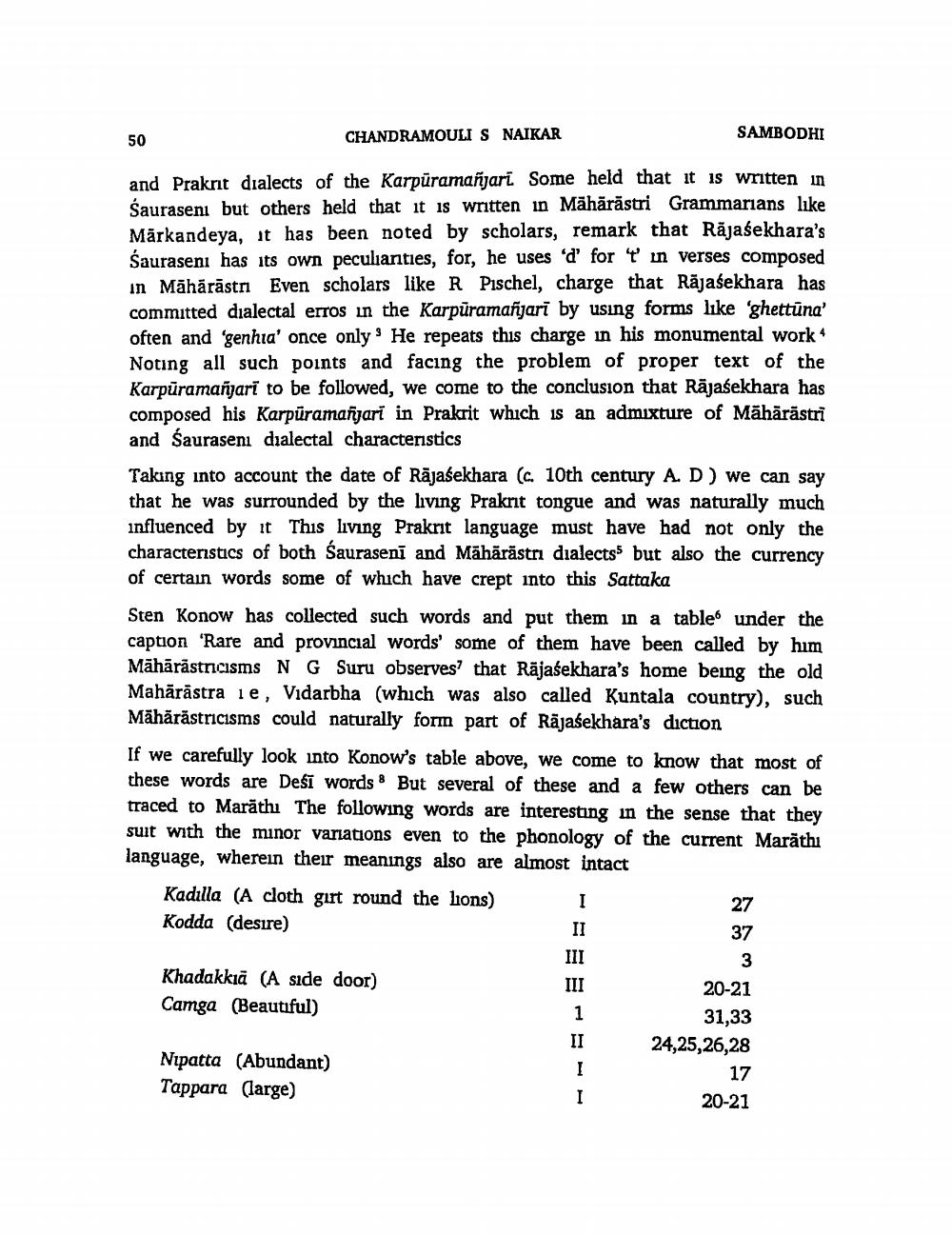________________
50
CHANDRAMOULI S NAIKAR
SAMBODHI
and Prakrit dialects of the Karpūramañjari. Some held that it is written in Saurasenu but others held that it is written in Māhārāstri Grammarians like Märkandeya, it has been noted by scholars, remark that Răjasekhara's Sauraseni has its own peculianties, for, he uses 'd' for 't' in verses composed in Māhārāstn Even scholars like R Pischel, charge that Rājasekhara has committed dialectal erros in the Karpūramanjarī by using forms like 'ghettūna' often and 'genha' once only. He repeats this charge in his monumental work Noting all such points and facing the problem of proper text of the Karpūramañjarī to be followed, we come to the conclusion that Rājasekhara has composed his Karpūramasjari in Prakrit which is an admixture of Māhārästri and Sauraseni dialectal characteristics Taking into account the date of Rājasekhara (c. 10th century AD) we can say that he was surrounded by the living Prakrit tongue and was naturally much influenced by it This living Prakrit language must have had not only the characteristics of both Saurasenī and Māhārāstri dialectss but also the currency of certain words some of which have crept into this Sattaka
Sten Konow has collected such words and put them in a table under the caption 'Rare and provincial words' some of them have been called by him Māhārāstnicisms N G Suru observes that Rajasekhara's home being the old Mahārästra ie, Vidarbha (which was also called Kuntala country), such Māhārāstricisms could naturally form part of Rajasekhara's diction If we carefully look into Konow's table above, we come to know that most of these words are Deśī words & But several of these and a few others can be traced to Marăthi The following words are interesting in the sense that they suit with the minor variations even to the phonology of the current Marathi language, wherein their meanings also are almost intact
Kadilla (A cloth girt round the lions) Kodda (desire)
37 3
Khadakkiä (A side door) Camga (Beautiful)
20-21
31,33 24,25,26,28
Nipatta (Abundant) Tappara (large)
17
20-21




